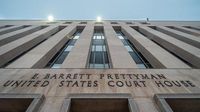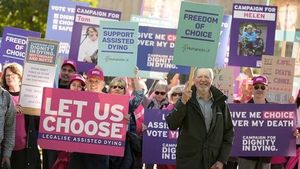On September 17, 2025, President Donald Trump’s latest crime-fighting initiative arrived in Memphis, Tennessee, with the deployment of National Guard units and federal agents—an action the president himself described as a “replica” of his earlier law enforcement surge in Washington, D.C. But while Trump’s rhetoric paints these interventions with the same brush, the legal and political realities on the ground tell a more complicated story—one that’s raising eyebrows from city halls to federal courtrooms.
Trump’s move in Memphis follows his now-familiar playbook: responding to what he calls an emergency of public safety, he presses state and local authorities to accept federal muscle on their streets. In Washington, D.C., the president’s powers are unusually broad; the city isn’t part of any state, so Trump can exercise quasi-gubernatorial authority, calling up the National Guard and assuming direct control over local law enforcement in emergencies. According to New York Magazine, “nothing anywhere else could actually be a ‘replica’ of what he did in the nation’s capital.”
Memphis, however, is a different beast. Here, Trump found an ally in Tennessee’s Republican Governor Bill Lee, who, despite initially not viewing the city’s crime levels as an emergency, agreed to mobilize the Guard at Trump’s urging. The local Guard units remain under Lee’s operational control, at least on paper. Yet, as New York Magazine notes, “it’s very clear who’s really in charge.” The mission, after all, is defined and orchestrated by the president, not by local or even state officials.
Unlike in Washington, the Democratic leaders who run Memphis and Shelby County did not request federal intervention. In fact, they view it as inappropriate, but face a tough political calculus: openly resisting the president and the state government risks being painted as “soft on crime,” potentially undermining their standing with voters already anxious about public safety. It’s a semi-hostile takeover, says New York Magazine, and one that puts local leaders in a bind.
This Memphis deployment isn’t a one-off. Trump has floated similar intervention plans for New Orleans, where a Republican governor would likely be similarly receptive. But the Memphis situation stands in stark contrast to cities like Los Angeles, Chicago, Baltimore, and Oakland—places where Democratic governors have rebuffed Trump’s overtures. In those states, the president must fully federalize National Guard units, and even then, their role is limited to supporting local law enforcement, not leading the charge. In Los Angeles this past June, for instance, Guard and Marine units were used to protect ICE and Border Patrol agents as they conducted immigration raids, all over the objections of state and local officials.
The legal distinctions may seem arcane, but they have real consequences for how law enforcement is conducted—and for the balance of power between federal, state, and local authorities. Trump’s approach, which New York Magazine characterizes as “politicizing law enforcement to an even greater degree than before,” has already begun to disrupt the cooperative relationships that typically exist across party lines. And with six red states having already sent Guard assets to Washington, D.C., at Trump’s request, some observers worry that the country is inching toward a level of militarized interstate conflict that feels uncomfortably close to civil war.
Meanwhile, the results of Trump’s earlier surge in Washington, D.C., are coming under increasing scrutiny. Since the emergency law-and-order initiative began on August 7, more than 50 people have faced federal charges in the District, according to an Associated Press review. But prosecutors have already dropped at least 11 of those cases, an unusually high rate of dismissal that judges say is wasting precious court resources.
U.S. Magistrate Judge Matthew Sharbaugh, who dismissed two felony assault cases on September 16 and 17, delivered a pointed warning from the bench. “That’s not the way it’s supposed to work, and it has real-world consequences,” Sharbaugh said, highlighting concerns that prosecutors may be rushing to file charges before cases are fully investigated. “This is becoming a real concern for the court just given the sheer numbers.”
The two cases in question involved Scott Pichon, accused of spitting on National Guard members outside Union Station, and Paul Nguyen, accused of assaulting a federal agent during a street fight. In Pichon’s case, the felony assault charge was dropped and replaced with misdemeanors in local court. For Nguyen, the felony was abandoned altogether, and he now faces no new charges. Nguyen, who appeared in court with his arm in a sling, told reporters, “It was the scariest experience of my life,” describing how his arm was broken during the arrest and how he spent five nights in jail before being released.
Sharbaugh pressed prosecutors to explain their decisions to drop the charges, but they offered little detail, saying only that the evidence had been reviewed. The pattern isn’t isolated: grand juries have refused to return indictments at least eight times in six separate surge-related cases, an exceptionally rare rebuke that signals deep skepticism about the strength of the evidence.
The White House, for its part, touts the numbers—claiming over 2,000 arrests since the federal intervention began. U.S. Attorney Jeanine Pirro, a Trump appointee and former Fox News host, says her office has charged over 1,700 cases and insists, “We follow the evidence wherever it leads, constantly evaluating each case as it develops to rigorously follow the law and to bring swift justice—including a dismissal when it is in the interest of justice.”
But not everyone is convinced. Magistrate Judge Zia Faruqui, another federal judge handling surge-related cases, has openly criticized Pirro’s office for “tarnishing its reputation” by bringing cases that don’t belong in federal court and needlessly detaining people while charges are sorted out. Pirro fired back, accusing Faruqui of letting personal politics cloud his judgment and criticizing grand juries that refused to indict two people accused of threatening to kill Trump. “The system here is broken on many levels,” Pirro said in a statement.
These legal battles and political skirmishes reflect a deeper tension in the country’s approach to law enforcement. Trump’s strategy—relying on emergency declarations, leveraging willing Republican governors, and bypassing or pressuring skeptical local officials—has produced dramatic headlines but also a trail of legal misfires and mounting frustration among judges and defense attorneys. For residents of cities like Memphis and Washington, D.C., the stakes are anything but abstract: the rules of engagement for law enforcement are being rewritten in real time, with consequences that reach far beyond the courtroom.
As the nation watches these high-stakes interventions unfold, the question lingers: will this new era of federal-local confrontation bring about the public safety gains Trump promises, or will it deepen divisions and further erode trust in the justice system? For now, the only certainty is that the debate—and the deployments—are far from over.




